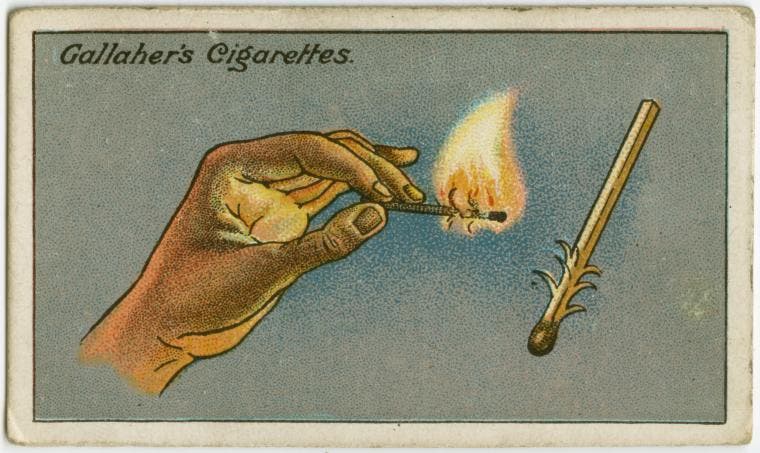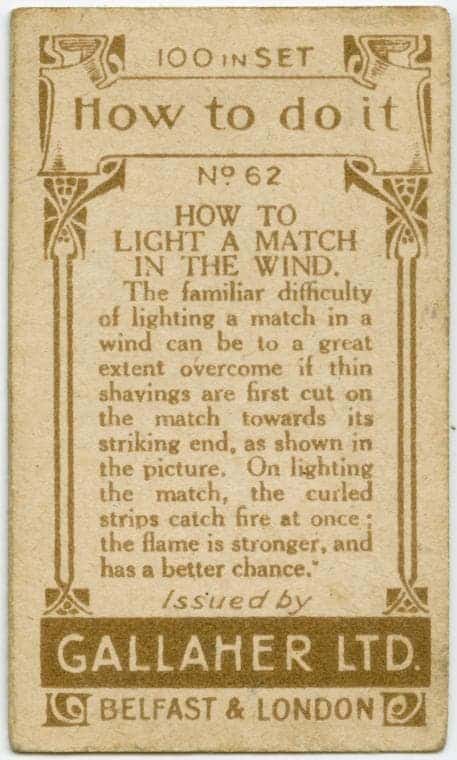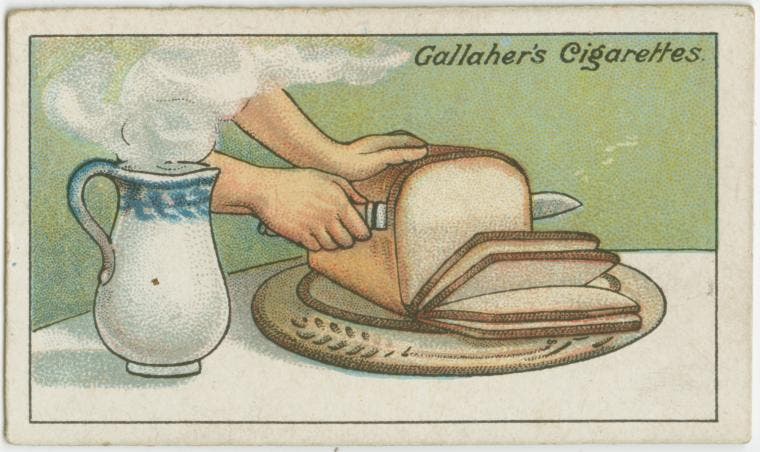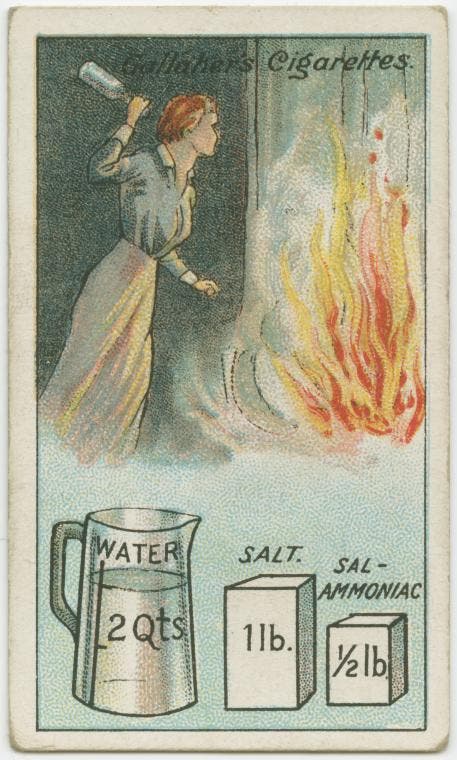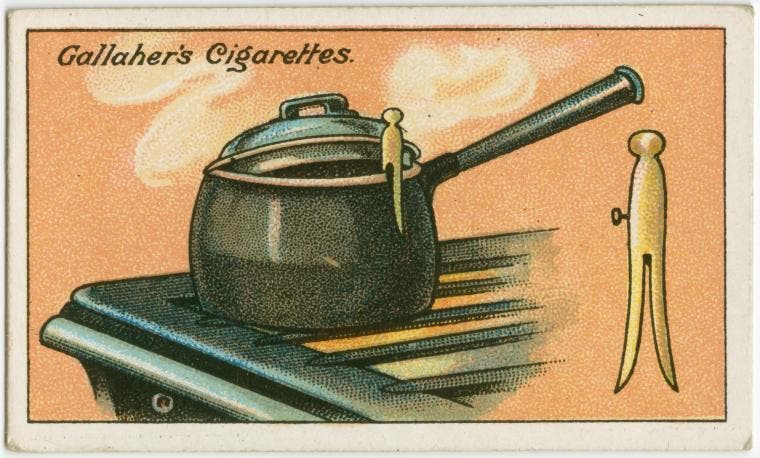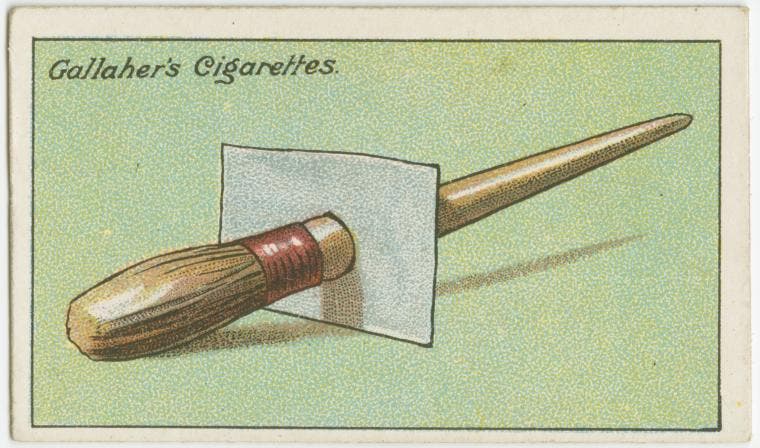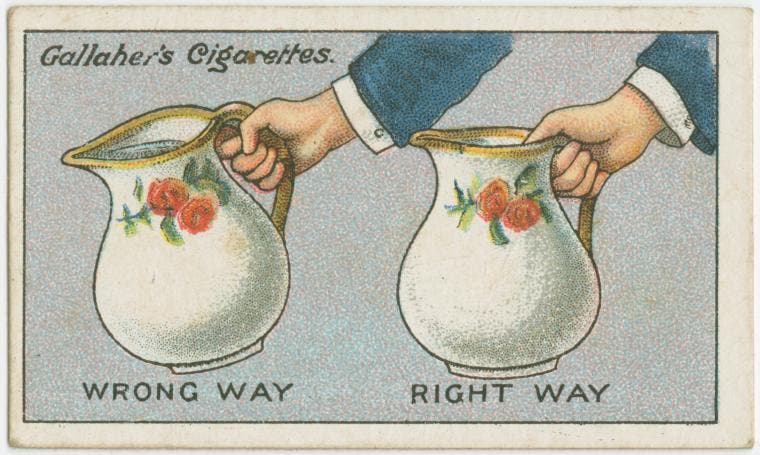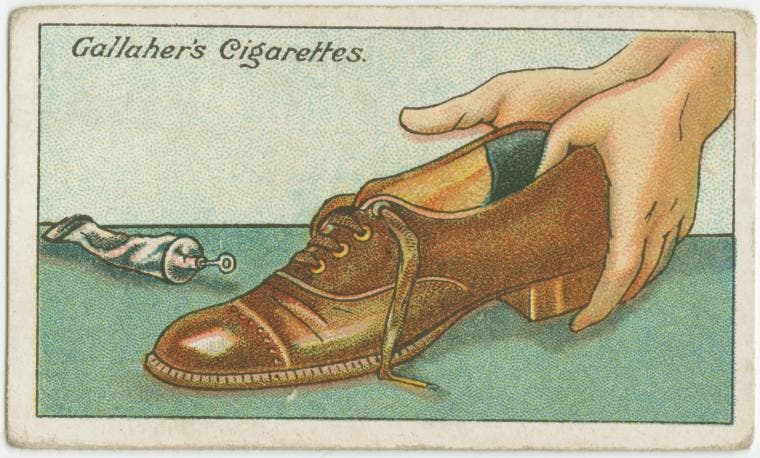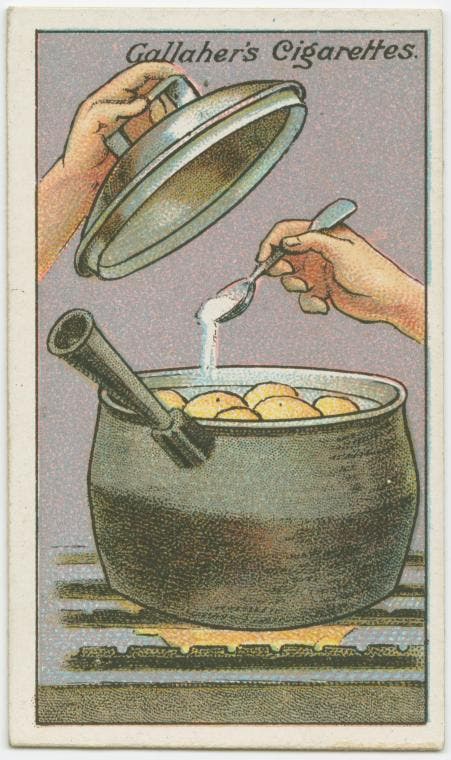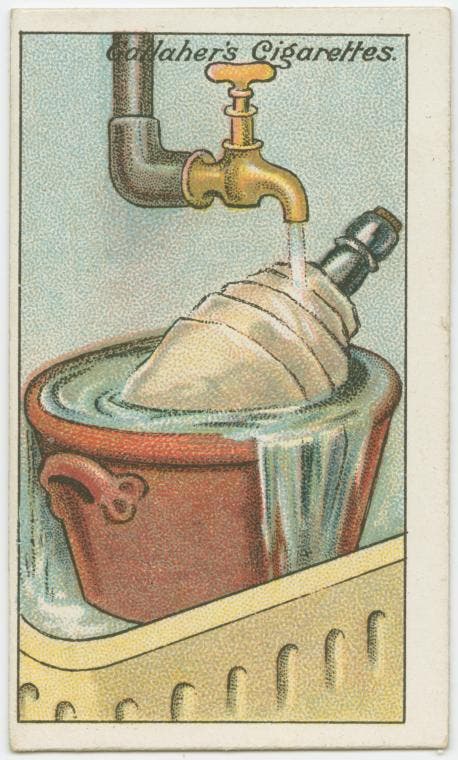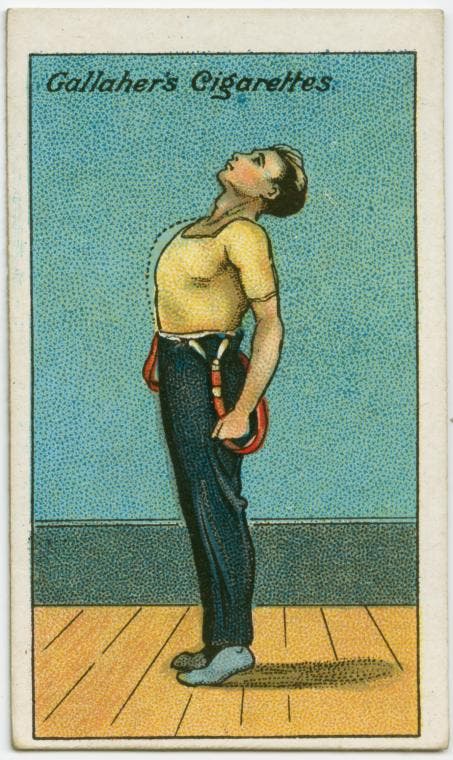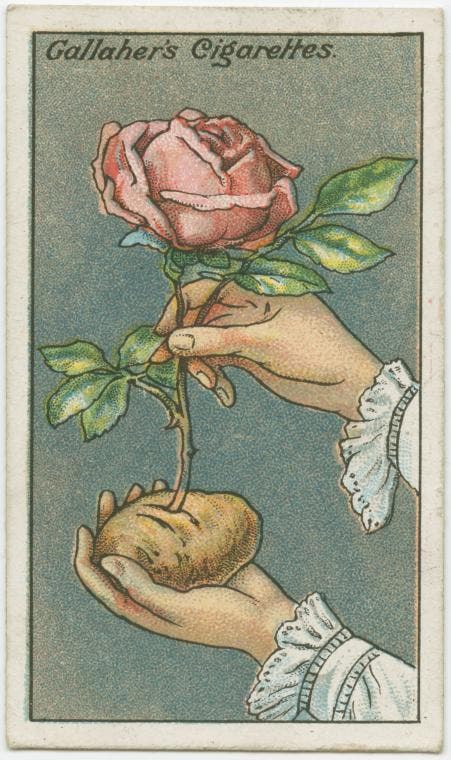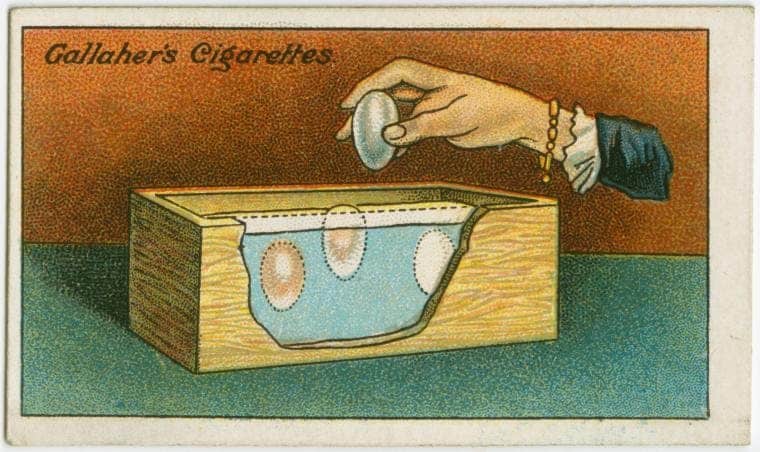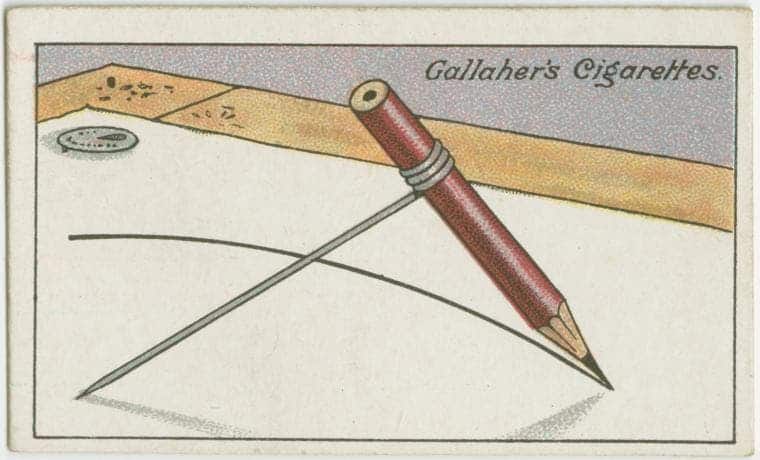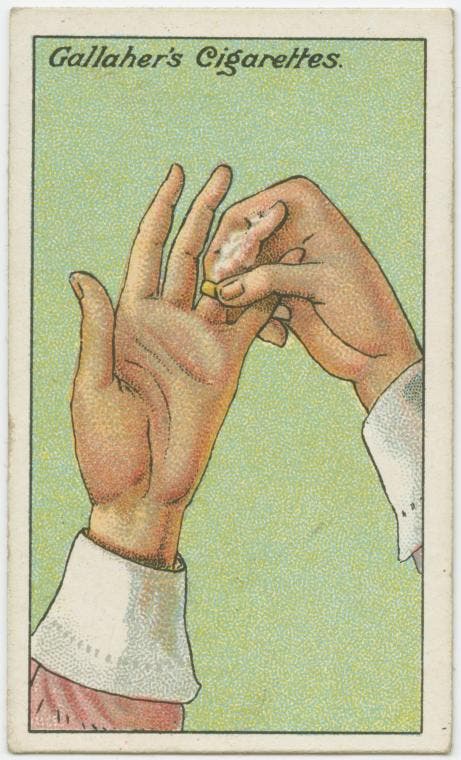In the early 1900s, cigarettes were living their golden years – something which millions of lungs regretted. But you can’t charge the smoking industry of not being creative. Back in the day, manufactures used to insert stiffening cards into their paper cigarette packs, to make them more sturdy and last more; not long after that, companies started printing all sorts of quotes, trivia, artwork, and… life hacks. In the early 20th Century, Gallaher’s Cigarettes printed a special series of 100 “How to do it”, and they included some tips which are really useful even today.
There are 100 cards in total in the New York Public Library’s George Arents Collection which was recently digitized. Here are some of our favorites:
How to light a match in the wind
Also, on the backside, they had a small explanation like this one:
The familiar difficulty of lighting a match in a wind can be to a great extent overcome if thin shavings are first cut on the match towards its striking end, as shown in the picture. On lighting the match, the curled strips catch fire at once; the flame is stronger and has a better chance.
How to cut new bread into thin slices
The difficulty of cutting new bread into thin slices can readily be overcome by the following expedient. Plunge the bread knife into hot water and when thoroughly hot wipe quickly. It will be found that the heated knife will cut soft, yielding new bread in the thinnest slices.
(I’ll just add the text from here on as it’s a bit easier to read)
How to make a fire extinguisher
Dissolve one pound of salt and half a pound of ammoniac in two quarts of water and bottle the liquor in thin glass bottles holding about a quart each. Should a fire break out, dash one or more of the bottles into the flames and any serious outbreak will probably be averted.
How to keep a saucepan lid’s raised
A useful article for keeping a saucepan’s lid raised can be made out of ordinary clothes peg. Drive a tack into the top part of the peg and then fix the peg over the edge of the saucepan as if it were the clothes line. The lid rests on the tack and is thus open.
How to extract a splinter
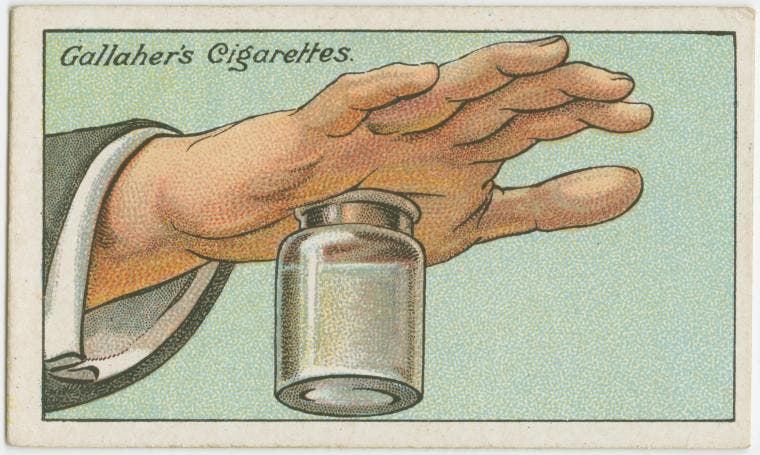
How to prevent eye glasses steaming
The moisture which collects on eye-glasses causes a great deal of trouble but if the glasses are daily rubbed with soap and very well polished afterwards, a very thin invisible film of soap remains, which has the effect of preventing the condensation of moisture on the glasses.
How to engrave on glass with emery powder
Cut a stencil of your design out of a sheet of paper same size as the sheet of glass. Glue this to the glass and affix the glass to the bottom of a box with drawing pins. Pour in shot and emery powder. Put lid on and shake well with a circular motion. The shots will cause the powder to engrave the stencilled pattern indelibly on the glass.
How to light a cigarette with a piece of ice
A very astonishing trick based upon the chemical property of combustion of potassium on contact with water. Place a small piece of potassium in the end of the cigarette; on touching with a piece of ice, the resulting flame will ignite the cigarette, much to the astonishment of your friends.
How to clean bottles
To clean the interior of bottles, a little sand and water should be well shaken inside of them. This will have the effect of cleansing every part, and the bottles can then be washed and dried.
How To Keep a Paint Brush Handle Clean
To do away with the annoyance of a wet and sticky brush handle, which is so unpleasant to the amateur painter, get a piece of card or tin and make a hole in it through which the handle can be forced, as shown in the picture. This prevents the paint from running down.
How To Clean New Boots
New boots are sometimes very difficult to polish. A successful method is to rub the boots over with half a lemon, allow them to dry, after which they will easily polish, although occasionally it may be found necessary to repeat the application of the lemon juice.
How To Carry a Heavy Jug
The picture gives a useful hint on carrying a heavy jug. The correct way to hold the jug is shown in the right-hand sketch. This prevents the weight from pulling the jug down and so spilling what it contains, as it is likely to happen if carried the other way.
How to remedy loose shoes
A pair of loose shoes can be made to fit comfortably by fixing (with glue) a piece of velvet or velveteen inside the heel as shown in the picture. Care must be taken to see that no wrinkles are left in the velvet.
A hint when boiling potatoes
To make potatoes dry and floury when cooked, add to water when boiling them a pinch of sugar as well as salt. When potatoes are done, water should be poured away and the saucepan replaced over the fire for a short time, shaking the saucepan to ensure equal dryness of potatoes.
How To Cool Wine without Ice
If no ice is available for cooling wine, a good method is to wrap the bottle in flannel and place it in a crock beneath the cold water tap. Allow the water to run over it, as shown in the picture, and in about ten minutes the wine will be thoroughly cool and ready for the table.
When Boiling Cracked Eggs
To boil cracked eggs as satisfactorily as though they were undamaged, a little vinegar should be added to the water. If this is done, it will be found that none of the contents boil out.
How to increase lung power
Stand erect on the balls of your feet and with the head held well back. Then inhale deeply until the lungs are fully inflated, gradually exhale, allowing the chest to sink first, followed by the lungs. Repeat exercise several times both morning and evening.
How to pack choice flowers
When sending choice flowers a long journey by post or otherwise, an excellent way to keep them from fading is to insert end of stalks into small holes or slit-cut in raw potato. This will keep the flowers fresh for a week or more. The flowers should be also supported by paper or cotton wool.
How To Test Butter
A good way of testing butter is shown in the picture. Rub a little of the suspected compound upon a piece of paper and set the paper alight. If it is pure butter, the odour will be dainty and agreeable, while the presence of Margarine is made known by an unpleasant smell.
How To Clean Real Lace
To clean real lace, lay the lace on a sheet of blue or white tissue paper, and well cover with powder of calcinated magnesia. Cover with more paper and place under a weight for a few days. The lace will be found to be quite clean after shaking the powder, and the most delicate texture remains uninjured.
How to preserve eggs
Eggs for preserving must be new laid, and by simply putting these into a box or tin of dry salt – burying the eggs right in the salt and keeping it in a dark place – it is possible to preserve them for a very long period. No air whatsoever must be allowed to reach the shells.
How To Revive Cut Flowers
To revive choice blooms that have faded during transit, plunge the stems into hot water and allow them to remain until the water has cooled. By that time the flowers will have revived. The ends of the stems should then be cut off and the blossoms placed in cold water the usual way.
How To Draw a Circle Without a Compass
Twist one end of a piece of wire round a pencil and leave the other end straight. Sharpen the point of the wire and use it like the point leg of a pair of compasses. The wire can be bent and the points of wire and pencil adjusted to make any size of circle.
How To Remove a Tight Ring from the Finger
We’ll end with a classic: To remove a tight ring from the finger without pain or trouble, the finger should be first well lathered in soap. It will then be found that unless the joints are swollen, the ring can be easily taken off. If, however, the finger and joints are much swollen, a visit to the jeweler is advisable.
